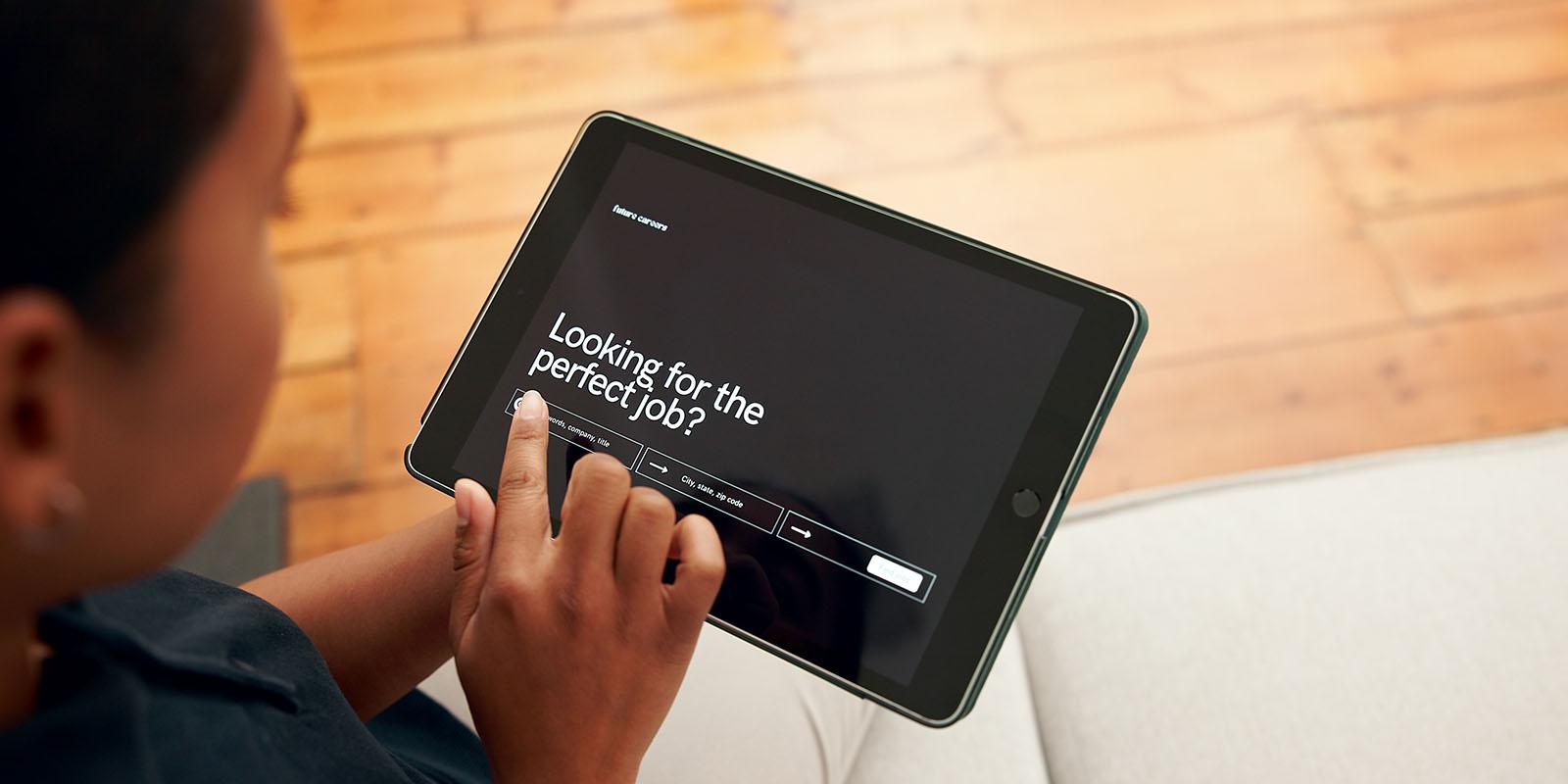
Table of Contents
Share this page
Figuring out the perfect time or best day to apply for a job might sound minor, but it can influence how quickly your application gets seen. Not all employers review applications the same way. Some look at them in the order they come in. Others start fresh on Monday morning and check whatever’s newest. Many use an applicant tracking system (ATS) to sort or highlight recent and highly relevant submissions.
Even though the process varies among employers, one factor remains key: timing can boost your visibility. If something as simple as when you apply can help you stand out in a crowded candidate pool, it’s worth learning how to use it to your advantage.
In this guide, we’ll walk through reasons why timing matters, the best and worst times to apply for jobs, key considerations that affect application timing, and practical tips to keep timing on your side throughout the job search process.
Why Timing Matters When Applying for Jobs
Timing isn’t everything, but it impacts how quickly your application gets noticed and how competitive you are in the recruitment process. Job searching can feel overwhelming, and understanding when to apply gives you one more tool to make the process less stressful.
In fields with clear hiring cycles, when you apply matters even more. A helpful first question to ask yourself is, “When is hiring season for my industry?”
- Teachers, for example, are usually hired ahead of the school year, so applying in October probably won’t get much traction.
- Retail, hospitality, and tax employers also staff up during predictable seasonal peaks, so consider whether the role you’re after corresponds with an uptick or a lag in hiring, and adjust your approach accordingly.
Outside of industry-based hiring seasons, a well-timed application can still help you stand out. Applying early in the posting window often moves your application higher in the queue and increases the odds that a hiring manager sees it before they start narrowing their list of potential candidates.
When Is the Best Time to Apply for Jobs?
In the next few sections, we’ll help you pinpoint the best time to apply for jobs, including the best time of day, week, and year to submit your application.
Best Time of Day to Apply
Early morning is usually the strongest time to apply. Many hiring managers check new applications as they start their days, which gives you a better chance of landing near the top of the queue instead of getting buried.
Applying between 6 a.m. and 10 a.m. keeps you ahead of the rush and puts your materials in front of employers while their inboxes are still manageable.
Worst Time of Day to Apply
Late afternoon and late at night tend to be the least effective times. Applications sent after 3 p.m. often get pushed to the next workday and mixed in with overnight submissions.
If you apply close to midnight, you’re competing with a large wave of after-hours job seekers, and your application may end up several pages down by the time hiring teams log in to review submissions.
Best Day of the Week to Apply
Monday and Tuesday are generally the best days to apply. Roles that were posted over the weekend tend to go live first thing Monday morning, and employers often start sorting through applicants early in the week.
Applying during this window increases your odds of being reviewed before hiring managers get pulled into interviews, meetings, or end-of-week deadlines.
Worst Day of the Week to Apply
Friday is typically the weakest day, and weekends aren’t much better. Most employers aren’t starting new evaluations right before the weekend, and anything submitted on Friday afternoon, Saturday, or Sunday usually sits untouched until Monday.
By the time someone checks their inbox, a new wave of applications may already be stacked on top of yours.
Best Time of Year to Apply
The biggest hiring waves usually occur in January through March, and again in late summer, especially August and September. New budgets, team planning, and fresh project cycles mean more open roles.
If your industry has its own hiring season, align your applications with that timeline for the best shot at moving forward quickly (e.g., school jobs over the summer).
Worst Time of Year to Apply
Hiring tends to slow down in late November through December, especially for full-time roles. Teams are busy wrapping up end-of-year tasks, budgets may be locked, and decision-making often pauses until January.
There are exceptions, but in general, year-end applications move more slowly and sometimes stall until the new year.
More Application Timing Considerations
Here are a few extra factors to keep in mind as you think about the ideal time of the day, week, or year to apply for a job:
- Time zones: If you’re applying for a job with a company based in a different region, match the company’s morning window, not yours. An 8 a.m. application in your time zone might hit the hiring manager’s inbox at 6 a.m. or 10 a.m., which can affect how quickly they see it.
- Posting delays: Some job boards publish roles immediately, and others batch updates or refresh job postings overnight. If a posting looks new, double-check the actual “posted” date on the company’s website to ensure you’re applying within the ideal time frame.
- Hiring team schedules: Hiring managers aren’t always following a perfect pattern. Company culture, workload, and team size can impact how often they check applications, so use timing as an advantage, not a guarantee.
6 Strategic Tips to Apply at the Right Time
The right timing can help you stand out before the applicant pool fills up. Use the following six strategies to make your job search more intentional and position yourself where and when hiring teams are most likely to notice you.
1 Focus on New Job Listings
Newly posted jobs are almost always worth your attention. Employers often review early applicants first, which means timing can give you a real advantage.
Start each search session by sorting job results by date, and zero in on opportunities labeled as “new” or “posted today” (depending on the platform you use). Concentrate on roles added within the last 24 to 72 hours, so you can be among the first to apply.
2 Ignore the Noise and Target the Right Roles
It’s tempting to apply to everything that looks even remotely possible, especially when you’re eager to gain momentum in your search. The problem with that approach, however, is that timing only helps when the roles you’re targeting are a good fit for your skills and goals. Spend your time on openings you’d seriously consider, not ones you’re applying to just because they’re there.
When you devote time to finding the right job for you and focus on applying for roles you actually want, your applications tend to be stronger. Plus, you’ll spend less energy chasing opportunities that won’t lead anywhere or, worse, jobs you’ll end up feeling dissatisfied with sooner vs later.
3 Treat Your Resume Like a Living Document
Having an up-to-date resume makes it easier to apply when the timing is right. You don’t need to rewrite it constantly, but you should add new, in-demand skills or accomplishments as they come up.
- Update your key achievements every month.
- Tailor your hard and soft skills to each job posting.
- Keep your resume formatting ATS-friendly.
By making regular updates, you can make a few quick tweaks when ideal job postings open up, instead of doing a full overhaul of your resume and scrambling at the last minute. Doing so helps you submit solid applications that are relevant and timely.
4 Save Searches and Set Job Alerts to Stay Ahead
Saved searches and job alerts help you stay in sync with posting times for opportunities that align with your search criteria.
Instead of relying on chance or irregular check-ins, alerts notify you the moment a new opening of interest appears. It’s an easy way to stay aware of what’s available in your field without constantly monitoring it, which can lead to job search burnout.
5 Track Your Applications to Spot Timing Patterns
Keeping notes on when you apply and when you hear back can reveal useful trends in your own search. By using a simple spreadsheet to log job-posting dates, application dates, and response times, you might see that certain days result in faster responses, or that roles posted at specific times move through the hiring process more quickly.
Tracking those timing patterns will give you a clearer sense of when your applications tend to gain traction and when they tend to lag, which will help you time future submissions more intentionally.
6 Speed Up the Process With Smart Apply Tools
If you want help staying on top of new job postings and applying at the right moment, a few tools can make the process smoother.
- Resume builders, cover letter generators, keyword scanners, and other AI tools can help you tailor your application materials more quickly, shortening the time between customizing your application and hitting “submit.”
- Organizational tools, such as dedicated job trackers, keep your applications in one place, help you visualize your progress, and can provide reminders or notifications, so you never lose track of timing or miss an opportunity.
- Sonara’s ExpertApply tool can surface well-matched roles that align with your target job title, industry, salary, and location, helping you move quickly when new openings appear while still giving you full control over which jobs you apply to.
All of these options offer simple ways to stay organized and use strategic timing to your benefit, thereby increasing your visibility among hiring managers.
Right Place, Right Time: Ready to Apply
Timing won’t make or break every application, but being intentional about when you apply for jobs can put you in a stronger position throughout your job search.
As you move forward, build a simple rhythm: Watch for fresh listings, apply when employers are active, and keep your materials ready so you can act fast when the right job appears. Combine those strategies with tools and habits that keep you organized, and you’ll be able to approach your search with more clarity and a better chance of being seen at the right moment and getting hired.
Share this page
